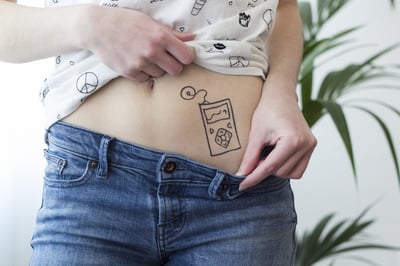Expert Advice: What to Do When You Can’t Use Your Insulin Pump
By Eritrea Mussa
 Taking a break from your insulin pump or dealing with a pump malfunction can be a stressful experience. Dr. Ananta Addala, an endocrinologist at Stanford University, offers a checklist of things to be prepared for in the event that you can’t use your insulin pump.
Taking a break from your insulin pump or dealing with a pump malfunction can be a stressful experience. Dr. Ananta Addala, an endocrinologist at Stanford University, offers a checklist of things to be prepared for in the event that you can’t use your insulin pump.
Recently, I wrote an article about taking a break from my insulin pump and how people with diabetes are able to do this effectively. For those who don’t know me, I am diaTribe’s Social Media manager, and I have had type 1 diabetes for more than 20 years. For the last six years, I've used a Tandem T:Slim X2 pump that uses Basal IQ technology with a Dexcom CGM. Recently, I had a charging malfunction with my pump that forced me to switch (temporarily) to insulin injections. The experience left me wanting to understand others who are successful using multiple daily injections (MDI), while I wasn’t as comfortable.
I wondered: Are there some basic rules or tips one could follow to make the process of switching to MDI from a pump any less stressful?
 I spoke with Dr. Ananta Addala, pediatric endocrinologist and instructor in the Division of Pediatric Endocrinology and Diabetes at Stanford University, to hear what advice she gives to people she treats who are navigating this same experience.
I spoke with Dr. Ananta Addala, pediatric endocrinologist and instructor in the Division of Pediatric Endocrinology and Diabetes at Stanford University, to hear what advice she gives to people she treats who are navigating this same experience.
“In case of a site failure or pump malfunction leading to a forced break, it’s important to be systematic and thoughtful [about your approach],” said Addala.
In other circumstances, a person may just want an insulin pump holiday. “There are three main reasons one may need, or want, to take a short break from a pump,” she said, including:
-
The buildup of scar tissue or a lack of viable locations for site placement.
-
The need for a short mental or emotional break from diabetes technology (which can be overwhelming for some people).
-
The need to remove your pump during exercise.
Addala recommends planning ahead, just in case, regardless of the reason for your pump break. This includes creating a “pump failure checklist.” A checklist will make sure that all those questions you have are answered, such as:
-
Do you know who to call if the pump fails?
-
Who should you contact or speak to?
-
What supplies should you have on hand?
Having a checklist that you can turn to when the unexpected happens, or whenever you want to seamless transition during a voluntary break, can help relieve some stress and uncertainty.
What to do if your insulin pump fails
Here is an example of my “pump failure checklist,” developed with Addala:
-
Contact the number for the support line of the manufacturer of your insulin pump as soon as possible, especially if your pump fails or breaks unexpectedly.
-
Contact your endocrinologist or primary care physician for help figuring out your basal insulin rates and to discuss your personal “dose sheet” if you don’t already have one, which shows you how to convert your basal and bolus rates from pump to MDI. You can ask for a dose sheet in advance at any of your healthcare appointments. (See below for more about the information on your dose sheet.)
-
Make sure to keep emergency short-acting and long-acting insulin on hand and accessible, if possible. In my situation, I wrote how I took the long acting insulin I had available to prevent DKA. Addala recommends keeping emergency long acting insulin on hand if possible. If only short acting is available, she recommends “testing every 3 hours and taking insulin to prevent DKA.”
-
Have a list of contact numbers that you keep handy, 24/7.
A word about dose sheets: A dose sheet can tell you how much short-acting insulin you need in order to prevent diabetic ketoacidosis (DKA), while making sure you do not take too much and cause hypoglycemia. Your dose sheet should explain how much long acting insulin to take to replace your hourly basal rate. It should also provide an insulin to carb ratio for your mealtime bolus amount. If you do find yourself in a situation where you don't have a dose sheet and are unsure of what to do, it's important to contact your endocrinologist or primary care provider.
Preparation is key; having these resources and supplies on hand at all times can help prevent any future emergencies. Having a checklist made me feel more secure and equipped to handle a pump emergency, and can give all people with diabetes greater peace of mind when faced with this situation.
Photo credits: iStock (top); Stanford (bottom).








